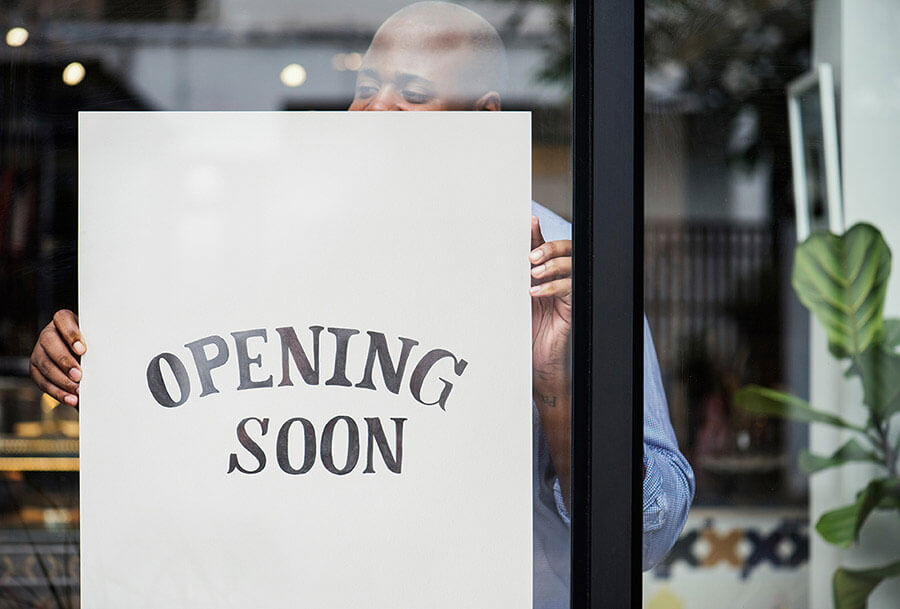Opening a Restaurant: A Checklist to Prepare for Day 1

Opening a restaurant is hard work, as anyone who’s ever done it will attest to. But if you find yourself here, chances are you have put in a lot of that work already.
Now, it’s time to cross all your proverbial T's and dot all your proverbial I’s. In other words, it’s time to put all your effort up to this point together. Your goal: making sure everything is all set for opening day.
With that in mind, allow us to introduce you to the following checklist of ten steps to opening a restaurant.
1. Staff Hiring & Training
By opening day, you should be fully staffed.
Your restaurant staff should also be ready to greet guests and provide top-notch customer service. This, of course, requires training them properly.
Make sure to clarify expectations surrounding the following customer service-related line items:
- Customer service standards: How every customer should be treated
- How to respond to customer complaints
- What not to say to customers
- How to handle special requests
2. Menu Testing & Streamlining
Just because you like that sweet and salty CBD-infused smoke-foam-topped gastronomic creation you concocted in a burst of culinary inspiration at 12:30 a.m. doesn’t mean that everyone else will. Conversely, it could just be that your great grandma’s tried-and-true recipe for jerk chicken is just a bit too spicy for most taste buds.
This is why getting feedback on your menu in the form of recipe testing and streamlining it accordingly is important.
After running menu items by your kitchen staff, we suggest you conduct taste tests and gather feedback from a diverse group, then tailor the menu according to favorable test results.
Menu testing (as opposed to taste testing) is another important part of prepping your restaurant for opening day. To clarify, by menu testing, we’re referring to testing your servers’ knowledge of your menu to ensure they know it inside out.

3. Equipment & Facility Readiness
Your kitchen staff needs to know how to prepare every menu item. But without the right equipment, all that knowledge is next to useless.
Therefore it’s important that after purchasing all necessary equipment, you test that equipment for full functionality. This should be done long before opening day. That way, if there are any issues, you have enough time to address them. Whether it’s putting in a service request or conducting necessary repairs internally, you’ll need time.
Doing a service dry run (or several) is another great idea to ensure that your restaurant space is ideally configured to handle the hustle and bustle associated with peak service hours.
4. Marketing & Promotion
We can’t overemphasize the importance of getting the word out about your new restaurant. This is where restaurant marketing and promotion are helpful. And, while marketing and promotion do include utilizing traditional channels, there are so many other ways you can promote or market your business.
We highly recommend launching a multi-channel or omnichannel marketing strategy that incorporates elements such as social media marketing, Google Business listing and reputation management, email & SMS blasts, radio/TV ads, and more.
Hosting local events in your community can also be a great way to spread the word about your business. After all, as Cameret Bannister notes for Toast, “78% of restaurant diners said they're likely to base their choice on a friend’s recommendation”. And, as is the case with social media marketing, the ROI potential can be quite high, since associated costs are extremely low compared to the amount of visibility generated.
5. Soft Opening
Conducting a soft opening before opening day is a task that no new restaurant owner should skip. What is a soft opening for a restaurant exactly? According to Yelp:
- A soft opening helps new restaurants figure out where the kinks are in their operation before the grand opening
- Soft openings are usually limited in both the number of guests attending and the menu items available
- This trial run is the best way to gauge what works and what doesn’t, and feedback from customers is invaluable in improving restaurant operations
6. Online Presence & Reservation Readiness
Setting up an online booking and reservation system for your customers, while not quite as crucial as some of the other steps on this list, is still nevertheless important. Why?
As Upmenu notes, “Online reservations will attract more customers to your restaurant. As many as 40% of them declare that online booking should be available in every restaurant mobile app.”
Without an online reservation system set up, you could risk missing out on a large portion of your potential target customer base. Plus, online reservation systems offer plenty of additional benefits, such as:
- Reducing no-shows
- Streamlining & automating the reservation booking process, giving time back to your front-of-house staff
- Reducing human error and double-bookings
In today’s world, having a website is a given. In case you’re thinking about starting a restaurant without one, we have one suggestion: Don’t.
7. Inventory
Developing a system to track stock levels and reorder points can help you not only order enough stock for your opening day but also keep a continued eye on which food items you use often vs. which ones sit and go bad. This helps you dial down on order amount and frequency.
Digitized inventory management systems are often provided as a part of restaurant management software programs like ToastTab, Posist Restaurant POS, and Owner.com, among others.
8. Division of Staff Responsibilities
Explicitly and intentionally defining roles and responsibilities in advance of opening day is vital. It will ensure that your entire team, including front-of-house and back-of-house staff, is crystal clear on the scope of each role and the ensuing responsibilities.
This will help you operate as a cohesive whole with a common goal: keep the customer satisfied.
9. Operational Dry Run
Conducting an operational dry run by inviting those local to the area to come and eat for free or at a discount can help you identify potential bottlenecks and areas for improvement.
10. Customer Feedback & Adaptation
Learning what you’re doing right and where you can do better isn’t just for self-improvement.
Soliciting honest feedback about your restaurant’s food, atmosphere, customer service, and more, can make you aware of any blind spots and give you the perspective required to make any helpful changes.
The other side of customer reviews is reputation management. By giving people a chance to voice themselves, you get the chance to rectify any mistakes with service recovery best practices, thereby safeguarding your reputation.
Stock Up On What You Need for Opening Day
Hungry for more information about how to open a small restaurant, how to ensure accessibility, or how to choose the right commercial equipment? Now that you’ve read thrugh our top ten steps to opening a restaurant, we invite you to check out our blog post “Key Considerations for First-Time Restaurant Buyers”.
Ready to outfit your restaurant with the right commercial restaurant equipment? GoFoodservice has everything you need.
Share This!